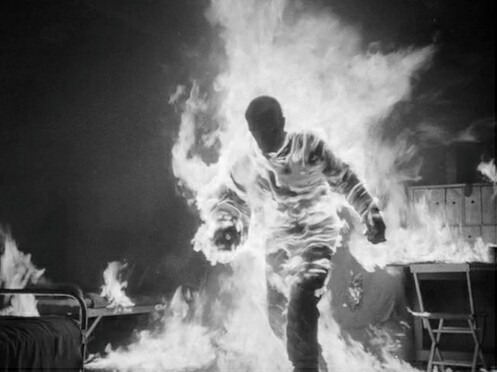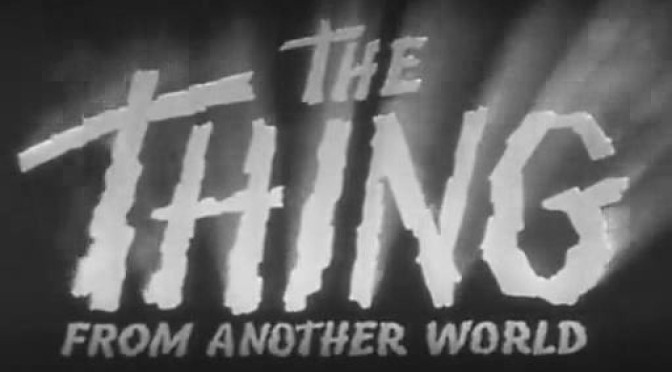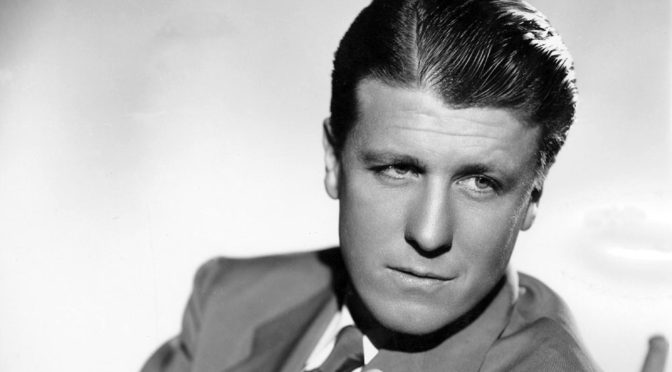Tom Steele body doubled James Arness (The Thing) during the end scene in which The Thing is doused with kerosene and set ablaze and is believed to be the first full body burn ever filmed. Steele wore an asbestos suit with a special fiberglass helmet with an oxygen supply underneath. At the time, he used a 100% oxygen supply, which was highly combustible. It was pure luck he didn’t burn his lungs whilst breathing in the mixture.
In the 1960s and 70s he remained active as a stuntman but took on more acting bits, including a role as a truck driver in 1966’s Harper and a bit as a security guard for a private security services company in the 1971 Bond epic Diamonds Are Forever. He did driving stunts for Disney’s late-1960s Love Bug films. His last film before retiring was 1986’s Tough Guys, in which he played an elderly man caught up in a bank robbery. In his last years, Steele was a frequent participant at Western and Serial film festivals around the country.
James Arness is famous, of course, as Marshall Matt Dillon on the long-running TV Western Gunsmoke. He was hired as the Thing for his height, at 6’7″. He was reportedly so embarrassed by his work on this film, that he failed to appear at the Premiere. He often remarked that he felt his make up as “The Thing” made him look like a giant carrot. Interesting note, his brother is Peter Graves, best known for his role as James Phelps on the Mission Impossible TV series.
The Thing From Another World directed by Christian Nyby for Winchester Pictures Corporation.
Things to look up (click on item to go to IMDB page ):
- Tom Steele
- James Arness
- The Thing From Another World
- Christian Nyby
- Winchester Pictures Corporation
- Howard Hawks
 Glossary of stunt terms as defined by www.RichmondStunts.com – Fire Stunt: any action sequence performed where the stunt guy / girl is on fire, in fire or escaping fire. Fire stunts are of high risk and considered to be one of the most dangerous stunts due to the unforgiving nature of fire. Stunt Performers do not have some super human ability to withstand extreme temperatures. They don a special fire suit typically soaked in a water based gel and have protective thermal barrier gels covering any exposed skin which may not be covered with the protective suit.
Glossary of stunt terms as defined by www.RichmondStunts.com – Fire Stunt: any action sequence performed where the stunt guy / girl is on fire, in fire or escaping fire. Fire stunts are of high risk and considered to be one of the most dangerous stunts due to the unforgiving nature of fire. Stunt Performers do not have some super human ability to withstand extreme temperatures. They don a special fire suit typically soaked in a water based gel and have protective thermal barrier gels covering any exposed skin which may not be covered with the protective suit.






